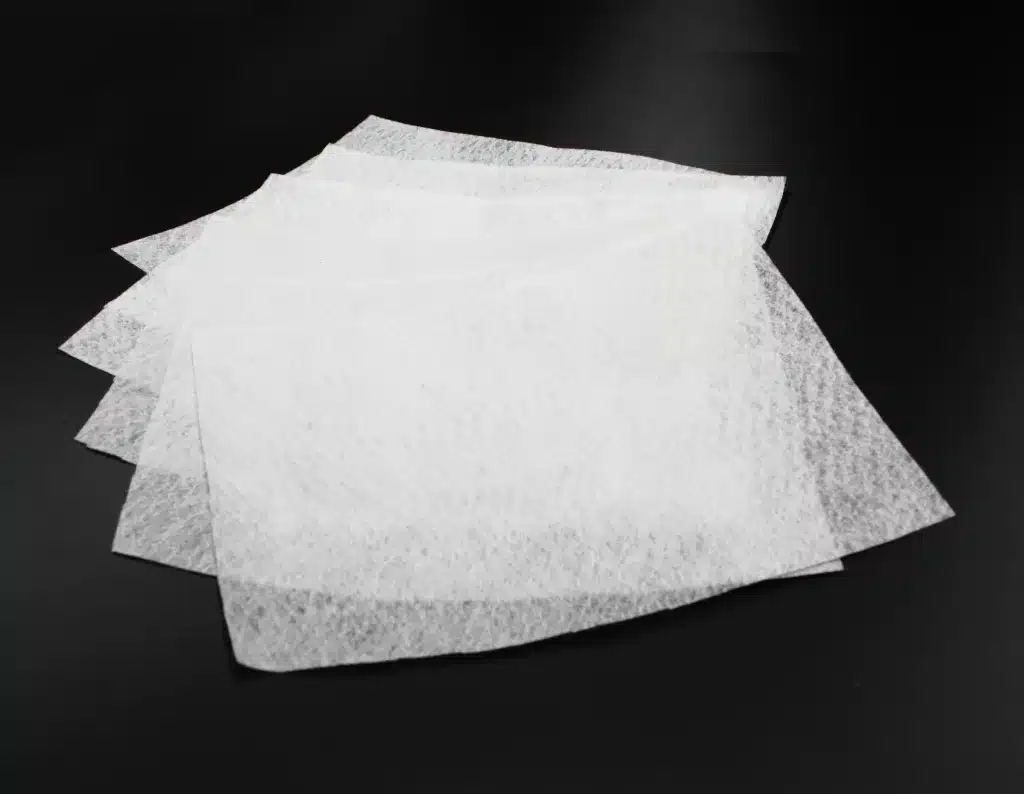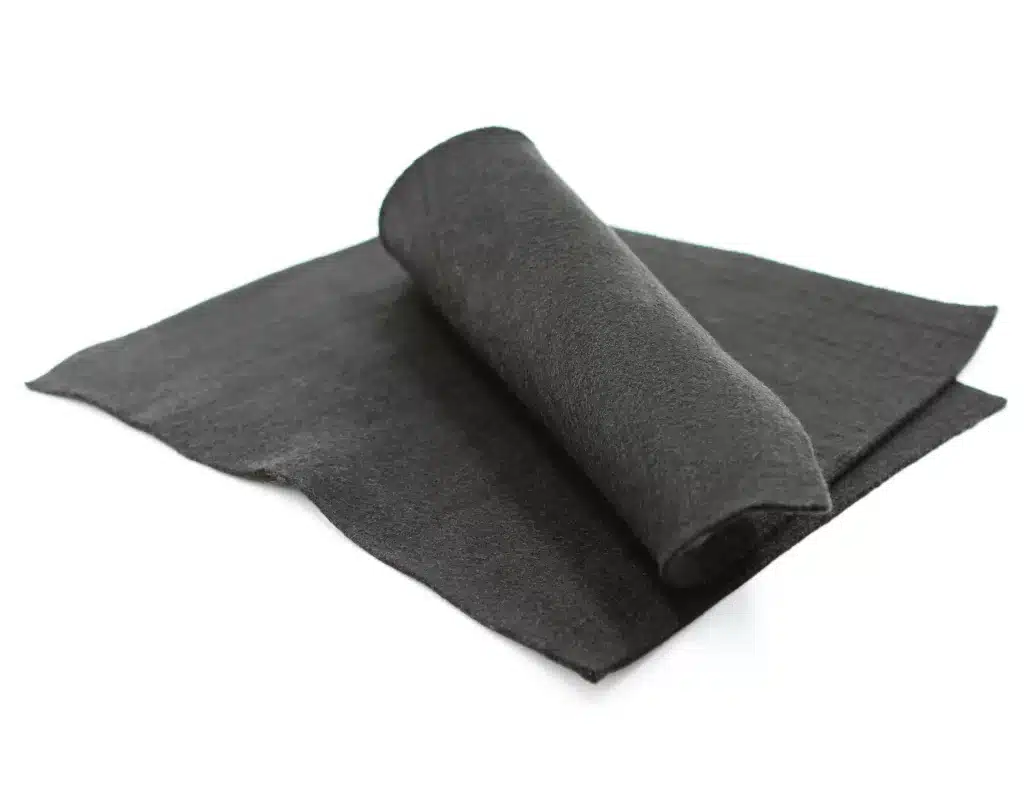+86-159 9860 6917
info@geofantex.com
geofantex@gmail.com
+86-400-8266163-44899
Erosion poses a significant threat to landscapes worldwide, especially on steep hillside terrains where soil stability is crucial. In the battle against erosion, geotextiles emerge as indispensable allies, offering innovative solutions to combat soil degradation by evenly distributing water flow and reducing surface runoff. This article delves into the intricate world of geotextiles, exploring their role in erosion control and soil stabilization.
How do geotextiles prevent erosion?
Geotextiles prevent erosion through several specific mechanisms. Here’s how they work in different environmental contexts:
Separation:
- Function: Geotextiles separate different soil layers.
- Example: Used on slopes to prevent soil from washing away.
- Effect: Maintains soil integrity and prevents erosion by stabilizing the soil layers.
Filtration:
- Function: Allows water to pass through while retaining soil particles.
- Example: Installed under riprap or gravel on riverbanks.
- Effect: Prevents soil particles from being washed away while maintaining water flow, thus reducing erosion.
Reinforcement:
- Function: Adds strength to the soil.
- Example: Used in the construction of retaining walls and embankments.
- Effect: Enhances the stability of slopes and embankments, reducing the likelihood of erosion.
Drainage:
- Function: Facilitates the removal of excess water.
- Example: Installed in agricultural fields and around foundations.
- Effect: Reduces waterlogging, which can lead to soil erosion, by ensuring proper drainage.
Vegetative Support:
- Function: Supports vegetation growth.
- Example: Used in landscaping and along highways.
- Effect: Vegetation roots help bind the soil, and the geotextile supports this growth, thereby reducing erosion.

What is geotextile fabric for erosion?
Geotextile fabric is a crucial material used in civil engineering and environmental management to prevent soil erosion. This fabric is designed to stabilize soil and control the movement of water, making it an essential tool in various erosion control projects.
Purpose of Geotextile Fabric
- Erosion Control: Geotextile fabric helps prevent soil erosion by providing a protective layer that stabilizes the soil. It reduces the impact of water flow on the soil surface, preventing displacement.
- Separation: It acts as a barrier between different layers of soil or between soil and other materials, maintaining the integrity of each layer.
- Filtration: The fabric allows water to pass through while trapping soil particles, preventing the erosion of fine soil particles.
Functions of Geotextile Fabric
- Soil Stabilization: By reinforcing the soil, geotextile fabric increases the soil’s load-bearing capacity and resistance to erosion.
- Drainage: It facilitates proper drainage by allowing water to flow through while preventing soil from being washed away.
- Protection: In areas prone to erosion, such as slopes, riverbanks, and coastal areas, geotextile fabric provides a protective layer that mitigates the erosive forces of wind and water.
Applications
- Road Construction: Used under roads to prevent soil erosion and improve road stability.
- Landscaping: Helps in stabilizing slopes and preventing erosion in landscaped areas.
- Coastal Protection: Used in coastal areas to protect shorelines and prevent erosion from waves and tides.
- Agriculture: Assists in controlling soil erosion in agricultural fields, enhancing soil conservation.
Geotextile fabric is an essential material for preventing erosion and providing stability, separation, filtration, drainage, and protection in various applications. Its use in civil engineering and environmental management helps maintain soil integrity and promotes sustainable development.
What is geotextile for soil stabilization?
Geotextiles are synthetic fabrics used in civil engineering and construction projects. They play a critical role in soil stabilization, ensuring the longevity and integrity of structures.
Purpose of Geotextile in Soil Stabilization:
- Separation: Geotextiles prevent the mixing of different soil layers. This separation maintains the integrity of each layer’s unique properties. Example: Placing geotextile between a granular road base and a soft subgrade prevents the base material from sinking into the subgrade.
- Reinforcement: Geotextiles enhance the strength of the soil, allowing it to bear heavier loads. Example: In embankments and retaining wall construction, geotextiles distribute the load, reducing the risk of structural failure.
- Filtration: These fabrics allow water to pass while retaining soil particles, ensuring proper drainage. Example: Geotextiles used in drainage systems prevent soil from clogging the drainage pipes or aggregates.
- Drainage: Geotextiles facilitate the flow of water in both horizontal and vertical directions, preventing water accumulation. Example: In roadways, geotextiles help in removing excess water, reducing the risk of pavement damage.
Types of Geotextiles:
- Woven Geotextiles: Made by weaving fibers together, offering high strength and durability. Ideal for applications requiring high load capacity.
- Non-Woven Geotextiles: Produced by bonding fibers together using heat or chemicals, providing excellent filtration and drainage properties. Commonly used in drainage and filtration applications.
Applications in Soil Stabilization:
- Road Construction: Used to reinforce roadbeds, improving longevity and reducing maintenance costs.
- Erosion Control: Installed on slopes and riverbanks to prevent soil erosion.
- Landfills: Used to protect landfill liners and promote proper leachate management.
- Foundation Construction: Enhances the stability of foundations in various construction projects.
Geotextiles are indispensable in modern construction and civil engineering due to their versatility and effectiveness in soil stabilization. They provide essential functions such as separation, reinforcement, filtration, and drainage, making them a vital component in ensuring the durability and stability of infrastructure projects.
What is geotextile for soil stability?
Introduction to Geotextile: Geotextiles are synthetic fabrics used in civil engineering and construction projects to enhance soil stability and provide reinforcement. They are typically made from polymers such as polyester or polypropylene and come in various forms, including woven, non-woven, and knitted.
Functions of Geotextile:
- Separation: Geotextiles prevent the mixing of different soil layers, maintaining the integrity and structure of the soil.
- Reinforcement: They provide additional strength to the soil, helping to support loads and reduce the risk of deformation or collapse.
- Filtration: Geotextiles allow water to pass through while retaining soil particles, preventing erosion and maintaining soil stability.
- Drainage: These fabrics facilitate the movement of water, reducing water pressure and preventing soil saturation.
- Protection: They protect underlying materials from damage during construction and throughout the lifespan of the project.
Applications in Soil Stability:
- Road Construction: Geotextiles are used under roads to improve foundation strength and prevent rutting.
- Erosion Control: They are installed on slopes and embankments to prevent soil erosion by stabilizing the surface.
- Drainage Systems: Geotextiles are used in drainage systems to ensure efficient water flow while preventing soil clogging.
- Landfills: They are used in landfills to separate waste layers and protect liner systems from damage.
Geotextiles play a crucial role in enhancing soil stability by providing separation, reinforcement, filtration, drainage, and protection. Their versatility and effectiveness make them essential in various civil engineering and construction applications.
Geotextile for soil stability encompasses a diverse range of applications aimed at fortifying the structural resilience of soil against external forces. Whether deployed in road construction, embankment reinforcement, or retaining wall systems, geotextiles serve as a reliable ally in safeguarding infrastructure from the detrimental effects of erosion and subsidence. Woven geotextiles are placed between the aggregate and the subgrade to stabilize the soil, preserve the aggregate, and reinforce the surrounding soil. By harnessing the inherent properties of geosynthetic materials, engineers can implement sustainable solutions that ensure the longevity and reliability of civil engineering projects.



Get Free Sample
We’ll respond as soon as possible(within 12 hours)





















